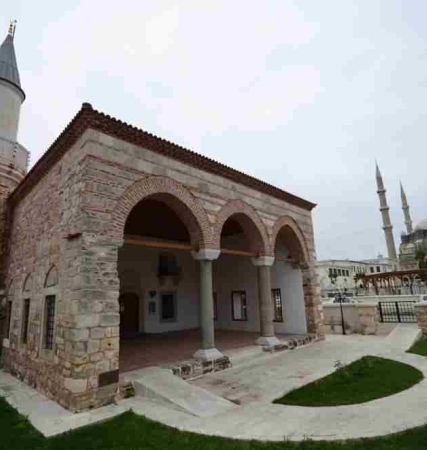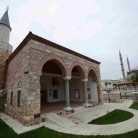It was built in a small garden with a rectangular plan extending to the qibla. It was built in casselled alternating order. It has a wooden roof and covered with tiles. There are a total of eight windows in two rows on the south-west façade. Three windows on the left of the lower row belong to the last congregation. The two windows on the right and three windows in the upper row open to the harem. The north-east façade has the same layout. However, there is a minaret in the centre of this facade leaning against the body wall. The cubic base of the minaret is made of rubble stone and brick, and the body of the minaret is made of brick. The body has a knitting system that forms schematic motifs. On the qibla façade, three windows were opened on the lower row and two on the top.
The body walls end with a spiked eaves at the transition to the cover. The last congregation place, which is organised in the form of an iwan, is passed through three arched openings. The arches are carried by the body wall on the sides and two columns in the middle. The wooden roof is covered with a wooden ceiling from the inside. The side walls of the last congregation place, which has a rectangular plan close to the square, are unplastered, rubble stone braided and have wooden beams in between. There is a window on both sides of the qibla wall and a harim door in the middle. Mitigation arches are seen on the windows with marble jambs. A moulded arch is formed above the window on the right. The square-planned harim is covered with a wooden ceiling from inside. A cupboard niche was opened in the centre of the side facades. The five-sided mihrab niche has a muqarnas.


















